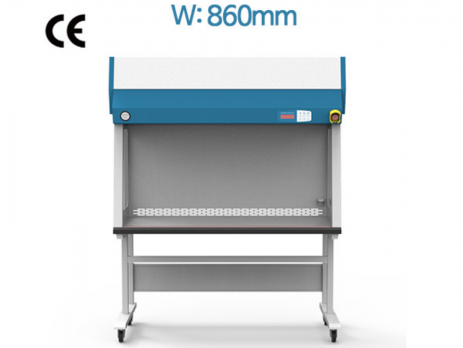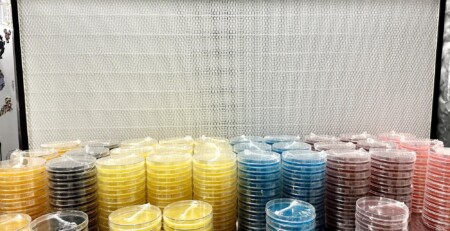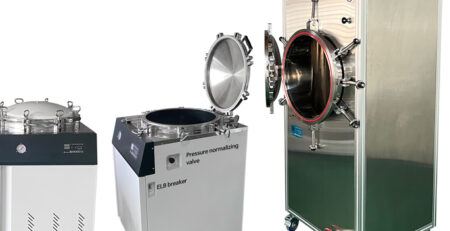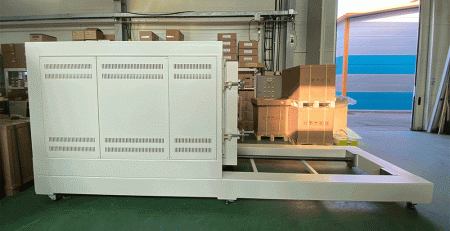Laminar Flow Clean Bench for Mushroom Growers
Mushroom growers use laminar flow clean benches (LFCBs) to create a spacious work area free of airborne contaminants. SH Scientific’s LFCBs offer exceptionally even airflow for a consistently clean environment.
A still air box is cheap and effective, but it’s nobody’s idea of fun. Their space constraints and finicky sterilization are fundamentally a pain to work with.
Sooner or later, it’s time for a more open, flexible workspace that you can still trust to avoid contamination.
For most mushroom growers, that means one thing: a laminar flow clean bench (LFCB).
We’ll briefly review airborne contamination risk, address some DIY alternatives, and see what sets SH Scientific’s laminar flow hoods apart.
What’s really in the air?
Ambient air is packed with spores.
Conservatively, a single cubic meter contains hundreds to thousands each of mold, bacteria, fungal, and other spores. We inhale a few with every breath.
Poor HVAC maintenance or a damp climate increase concentrations, but even outdoor desert air has its share of spores.
Direct exposure practically guarantees contact with contaminants. Our bodies generally deal with them, but mushroom cultures aren’t so resilient.
For instance, newly inoculated grain spawn are notoriously delicate. Especially prior to colonization, airborne spores may compete with and crowd out the desired species.

Preventing airborne contamination of mushroom cultures
There are two ways to keep your samples free of airborne spores.
- Block them off by working inside a pre-sterilized, airtight container. That’s the role of a glove box/SAB.
- Continually “flood” them with filtered air, so spores can’t settle in the first place. That’s the principle of a laminar flow clean bench.
Both are effective, but the first method strictly limits your working space, dexterity, and productivity.
Can’t I make my own circulator & filter?
Some cultivators have experimented with DIY air filtration systems or generic, off-the-shelf fan filter units.
These may be as simple as a multi-purpose fan attached to a generic air filter, supported above the workspace by a simple frame or box.
They’re marginally better than nothing, but nowhere near as effective as you might think (or hope)—and decidedly inferior to a still air box.
The fundamental problem is the quality of airflow.
Basic fan filters produce significant turbulence. Air generally moves to/through the fan, but swirls around en route. Contaminants will swirl and pass by a sample repeatedly, creating tens or hundreds of times as many opportunities for exposure.
What’s actually necessary is laminar airflow: the namesake quality of a LFCB.
“Laminar” refers to steady movement along streamlines. Picture the flow of water pouring gently from a kettle, as opposed to soup sloshing from a ladle.
This smooth, directional airflow can only travel away from the sample and through a sub-0.3-µm HEPA filter. It needs to be broad, gentle, and controllable, all while reaching every corner of the workspace. That’s exceedingly hard to pull off with inexpensive, generic components—even for an ambitious DIYer.
What is a laminar flow clean bench?
A laminar flow clean bench (LFCB) is a cabinet-like work area that provides a smooth stream of filtered air across the work surface. It’s sometimes called a laminar flow hood or sterile air hood.
-
 SH Clean Bench 1900V$5,990
SH Clean Bench 1900V$5,990 -
 SH Clean Bench 1500V$4,990
SH Clean Bench 1500V$4,990 -
 SH Clean Bench 900V$3,990
SH Clean Bench 900V$3,990
HEPA filtration
Before air reaches the work area, it passes through a HEPA filter that removes at least 99.7% of particles up to 0.3 microns in diameter.
This clean, continuous airflow protects against contamination during vulnerable stages of mushroom growing, such as substrate inoculation, incubation, and culturing. (It also keeps dust away, so LFCBs are often used to handle delicate technologies like microchip components, too.)
Airflow direction
Streamlines can’t cross each other, so LFCB airflow is either horizontal (back-to-front) or vertical (top-to-bottom).
The horizontal variety is a bit simpler to produce.
It has an illumination lamp, but lacks a UV lamp and door. The bench is parallel to the airstream, so turbulence is basically nonexistent with an empty bench. However, turbulence is greater with larger objects, since they’re relatively close to the horizontal air source.
These days, the vertical variety prevails.
It, too, has an illumination lamp, as well as a UV lamp and protective door. These add to production costs but enable continuous sterilization. To sterilize small equipment, technicians may keep a small gas burner or alcohol lamp on hand, and run the UV lamp perpetually.
Vertically, turbulence may be slightly higher since air flows directly toward the work surface. However, larger objects barely increase turbulence, if at all.
Note that LFCBs are strictly designed to protect the work surface. They do not protect the technician from contamination. Infection materials require a third type of hood, known as a biosafety cabinet.
Why choose an SH Scientific LFCB?
Uniform airflow is the most important factor, bar none. But reaching every nook and corner of the workspace is easier said than done.
Some inexpensive models simply force air from behind a HEPA filter. That helps with cleanliness, but doesn’t ensure a proper laminar flow.
The key is twofold:
- A strategically positioned divider that disperses air pressure across the filter’s entire surface area.
- A properly positioned vent hole in the bench, so air will flow truly vertically rather than out the door.





